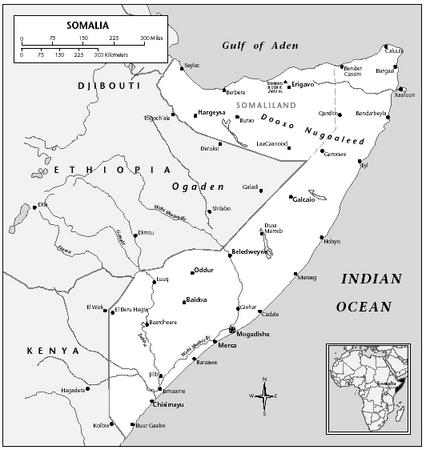Somalia - Environment
The increasing aridity of the Somali climate, coupled with excessive timber cutting and overgrazing, has led to deforestation and extension of the desert area. In a five-year period, Somalis can anticipate two years of drought. Overgrazing between Mogadishu and Chisimayu has resulted in the gradual movement of coastal sand dunes inland, posing a serious threat to agricultural areas and human habitation. Somalia has 6 cubic kilometers of renewable water resources with 97% used for farming. Three percent is for urban and domestic use. Only about 26% of the entire population have access to safe drinking water.
Along with its large livestock herd, Somalia has one of the most abundant and varied stocks of wildlife in Africa. The hunting and trapping of antelopes and gazelles for their skins was

banned in 1969. However, many species continued to be adversely affected by growing numbers of livestock, exclusion from watering spots by human settlement, and the cutting of bush vegetation and tree cover. As of 2001, only 0.3% of the nation's total land area was protected.
As of 2001, 18 of the country's mammal species and 8 bird species were reported endangered. Fifty-seven types of plants were threatened with extinction. Endangered species in Somalia include the black rhinoceros, Pelzeln's dorcas gazelle, Swayne's hartebeest, and the green sea, hawksbill, and leatherback turtle.